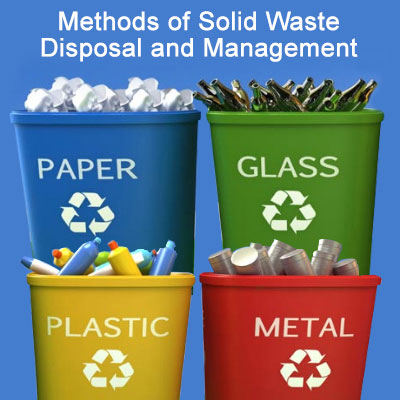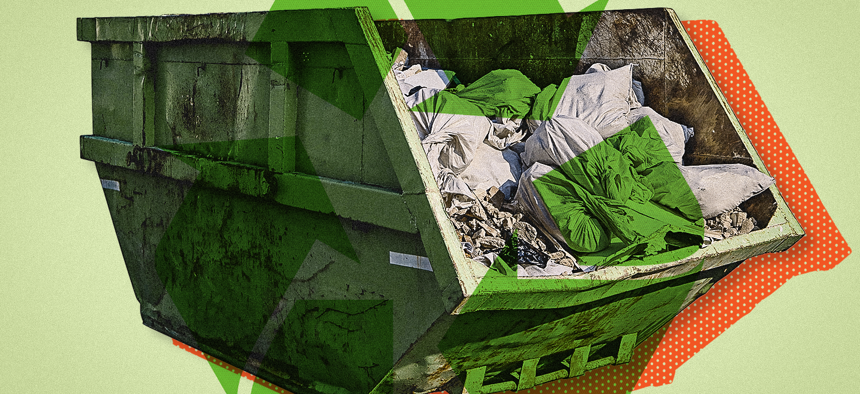Discovering Different Kinds of Waste in Modern Waste Monitoring Systems
The contemporary landscape of waste monitoring includes browsing a complicated variety of waste types, each calling for specialized handling and disposal techniques to minimize environmental effects. Local solid waste, harmful waste, electronic waste, and organic waste each present distinctive difficulties and chances for resource recovery.
Community Solid Waste
Community solid waste, commonly described as home trash or trash, incorporates a range of discarded products produced by property, business, and institutional sources within a town. This waste stream generally consists of items such as packaging, food scraps, yard trimmings, paper, plastics, textiles, and thrown out household items. The management of municipal solid waste is an important part of urban planning and public health and wellness, requiring efficient collection, transportation, and disposal systems.
Effective waste monitoring systems are created to minimize ecological impact while optimizing source healing. This typically includes a mix of strategies including recycling, landfilling, and composting. Reusing programs target materials like paper, glass, metals, and specific plastics, diverting them from land fills and reintroducing them into the manufacturing cycle. Composting natural waste, such as food scraps and backyard trimmings, not only decreases land fill use however additionally produces important dirt amendments.
Towns have to also resolve the financial and logistical obstacles connected with waste monitoring. Implementing pay-as-you-throw systems, boosting public recognition, and purchasing modern technology can considerably improve waste diversion rates. By incorporating these techniques, municipalities can foster lasting neighborhoods, decrease greenhouse gas emissions, and preserve natural deposits.
Hazardous Waste
Efficient hazardous waste management entails several important steps: identification, partition, disposal, and therapy. Partition ensures that hazardous products are kept individually from non-hazardous waste to avoid cross-contamination.
Regulatory frameworks, such as the Source Preservation and Recuperation Act (RCRA) in the United States, supply standards and requirements for dangerous waste management. Adherence to these laws, combined with improvements in waste treatment modern technologies, is necessary in minimizing the threats related to dangerous waste.
Electronic Waste
Digital waste, generally described as e-waste, stands for a swiftly expanding challenge in waste administration systems worldwide. This kind of waste includes thrown out electronic gadgets and devices such as mobile phones, computer systems, tvs, and other digital home appliances. The fast pace of technical improvement, combined with reducing item life expectancies and customer need for the most recent devices, has exponentially increased the quantity of e-waste produced every year.
E-waste is particularly troublesome due to its intricate make-up, typically consisting of harmful news substances like lead, cadmium, and mercury, Homepage which present considerable ecological and health risks otherwise properly taken care of. Conversely, e-waste also has valuable products such as gold, silver, and copper, which can be recouped and reused. The twin nature of e-waste-- both important and hazardous-- requires customized handling, recycling, and disposal processes.
Reliable e-waste monitoring includes rigid regulatory structures, robust collection systems, and advanced recycling modern technologies. Public awareness and engagement are important, as inappropriate disposal methods, such as illegal unloading and casual recycling, exacerbate ecological contamination and health and wellness threats. Consequently, improving e-waste management practices is essential for mitigating ecological effect and recuperating useful sources in a progressively electronic globe.

Organic Waste
Organic waste, consisting of cooking area scraps, backyard trimmings, and agricultural deposits, represents a considerable section of the global waste stream. This kind of waste is eco-friendly, suggesting it can be broken down by bacteria right into simpler natural substances. Despite its possibility for natural disintegration, inappropriate monitoring of natural waste can bring about negative environmental impacts, including the discharge of greenhouse gases such as methane, which contribute to climate adjustment.
Efficient administration of natural waste is critical for lessening these environmental effects (recycling lives services). Composting is a widely taken on method, transforming organic waste into nutrient-rich garden compost that can boost dirt health and agricultural efficiency. Furthermore, anaerobic food digestion is an arising innovation that transforms organic waste into biogas, a renewable resource resource, and digestate, go to my blog which can be used as fertilizer
Municipalities and waste management entities must apply durable organic waste collection and therapy programs to make best use of the advantages of these processes. Public education campaigns can additionally play a critical duty in motivating households and businesses to separate organic waste from other kinds of waste. By focusing on the management of organic waste, cultures can reduce garbage dump use, reduced greenhouse gas exhausts, and develop important results for agricultural usage.

Ingenious Waste Administration
In the world of waste management, cutting-edge approaches are changing exactly how societies manage their refuse, aiming for sustainability and effectiveness. One famous advancement is the execution of wise waste bins outfitted with sensors that keep track of fill degrees and maximize collection paths.
An additional noteworthy growth is the adoption of waste-to-energy (WtE) innovations. By converting non-recyclable waste into useful energy with processes such as incineration and anaerobic food digestion, WtE reduces landfill concern and gives an eco-friendly energy resource. Furthermore, innovations in chemical reusing permit the break down of intricate plastics right into their initial monomers, enabling the development of brand-new, top quality plastic products.
In addition, the round economy design is getting traction, highlighting the style of items and systems that focus on reusability and resource efficiency. This holistic method encourages industries to lessen waste generation from the beginning. With these innovative strategies, contemporary waste monitoring systems are not only dealing with the immediate difficulties of waste disposal yet also leading the means for an extra sustainable future.
Conclusion
An extensive understanding of municipal strong waste, contaminated materials, electronic waste, and organic waste, coupled with the implementation of ingenious waste administration solutions, is essential for mitigating ecological impacts. Integrating innovations such as smart waste containers and waste-to-energy systems can improve efficiency and sustainability. Effective waste monitoring methods not just foster source recuperation but additionally advertise public understanding and participation, eventually adding to the development of a round economic climate.
The contemporary landscape of waste monitoring involves browsing a complicated variety of waste kinds, each needing specialized handling and disposal techniques to alleviate environmental influences. Community solid waste, harmful waste, electronic waste, and natural waste each present distinct obstacles and possibilities for source recovery.Electronic waste, commonly referred to as e-waste, represents a quickly growing obstacle in waste administration systems globally. Via these ingenious approaches, modern waste monitoring systems are not just addressing the instant difficulties of waste disposal yet likewise leading the method for a much more sustainable future.
An extensive understanding of community solid waste, harmful waste, electronic waste, and organic waste, paired with the execution of innovative waste administration options, is vital for mitigating environmental impacts. (recycling lives services)